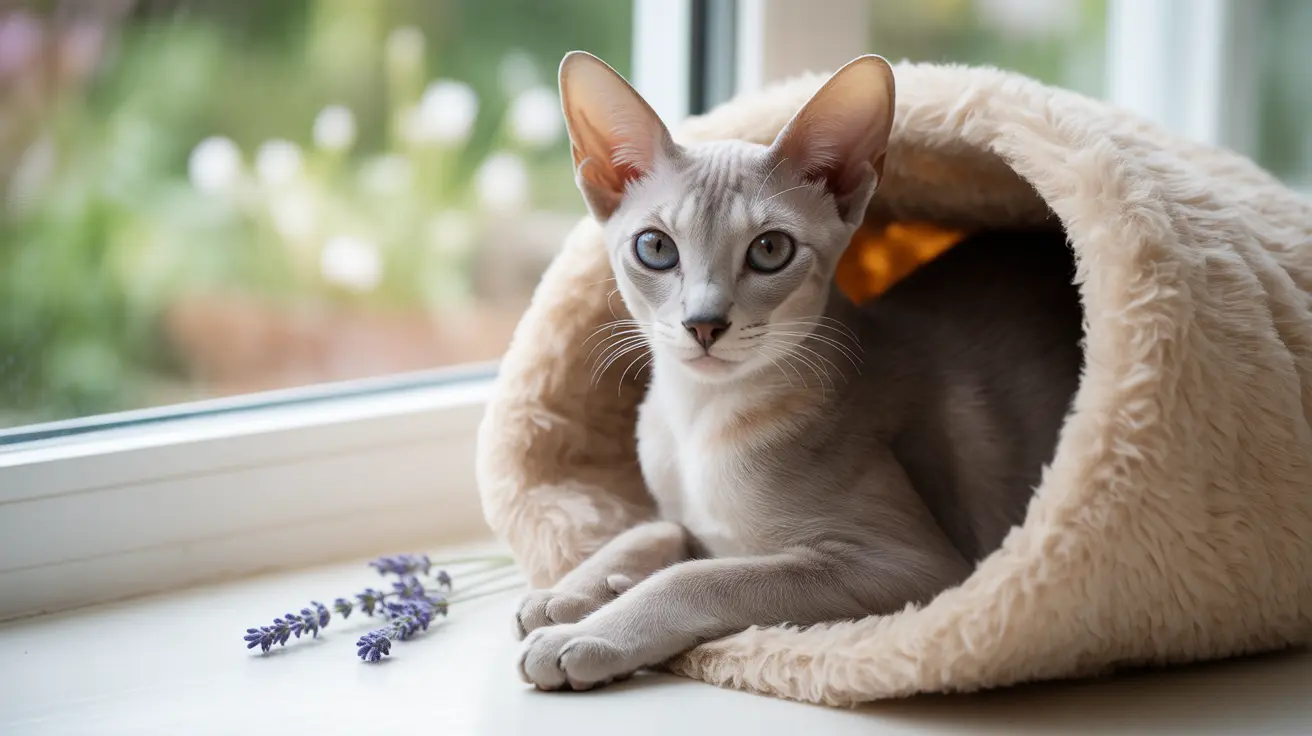Understanding Your Cat's Temperature Needs
Cats typically maintain a body temperature between 100.0°F and 102.5°F (37.7°C to 39.8°C). This higher baseline means what feels comfortable to us might actually be too cold for them. Certain cats are particularly susceptible to feeling cold, including senior cats, kittens, short-haired breeds, and those with underlying health conditions.
Key Signs Your Cat Feels Cold
Physical Indicators
Watch for these clear physical signs that indicate your cat is feeling cold:
- Cold ears, paw pads, and tail tip
- Shivering or trembling
- Hunched posture
- Tightly curled sleeping position
- Fur puffed up more than usual
Behavioral Changes
Your cat may display several behavioral changes when they're feeling cold:
- Seeking warm spots like sunny windowsills or heating vents
- Excessive cuddling or burrowing under blankets
- Reduced activity levels
- "Loafing" position with paws and tail tucked underneath
- Increased sleep or lethargy
Health Risks of Cold Exposure
When cats experience prolonged exposure to cold temperatures, they can face several health risks:
- Weakened immune system
- Increased susceptibility to upper respiratory infections
- Risk of hypothermia in severe cases
- Potential frostbite on extremities
- Reduced appetite and energy levels
Effective Ways to Keep Your Cat Warm
Indoor Environment
Create a warm, comfortable environment for your cat by:
- Maintaining room temperature above 70°F (21°C)
- Providing heated beds or warming pads designed for pets
- Placing soft blankets in favorite resting spots
- Blocking drafts from windows and doors
- Creating cozy hiding spots with warm bedding
Special Considerations
Some cats need extra attention during cold weather:
- Consider pet-safe sweaters for hairless or short-haired cats
- Provide multiple warming options throughout your home
- Keep senior cats and kittens in warmer areas
- Monitor outdoor cats more closely during cold weather
- Ensure adequate food intake, as staying warm requires more energy
When to Seek Veterinary Care
Contact your veterinarian immediately if you notice:
- Body temperature below 99°F (37.2°C)
- Severe lethargy or unresponsiveness
- Difficulty breathing
- Pale or bluish gums
- Prolonged shivering that doesn't resolve with warming
Frequently Asked Questions
What are the common signs that my cat feels cold and how can I check its body temperature?
Look for physical signs like cold extremities, shivering, and hunched posture. The most accurate way to check temperature is with a rectal thermometer, though this should be done carefully and preferably by a veterinary professional.
How can I safely warm up a cat showing symptoms of being cold or mild hypothermia?
Gradually warm your cat using blankets, move them to a warmer room, and provide warm (not hot) heating pads. Never use direct heat sources, as these can cause burns. Allow them to warm up slowly to prevent shock.
What health risks can my cat face if exposed to cold temperatures for too long?
Prolonged cold exposure can lead to hypothermia, weakened immune system, respiratory infections, and in extreme cases, frostbite. Senior cats and those with health conditions are particularly vulnerable to these risks.
How do I differentiate between a cat feeling cold and a cat having a cold (upper respiratory infection)?
A cold cat will show behavioral changes like seeking warmth and shivering, while a cat with an upper respiratory infection will display symptoms like sneezing, runny nose, and watery eyes, often accompanied by a fever rather than feeling cold.
What steps can I take to prevent my indoor or outdoor cat from feeling cold during winter?
Maintain warm indoor temperatures, provide multiple cozy sleeping spots, consider pet-safe heating pads, and limit outdoor time during cold weather. For outdoor cats, ensure they have access to insulated shelters and check on them regularly.






